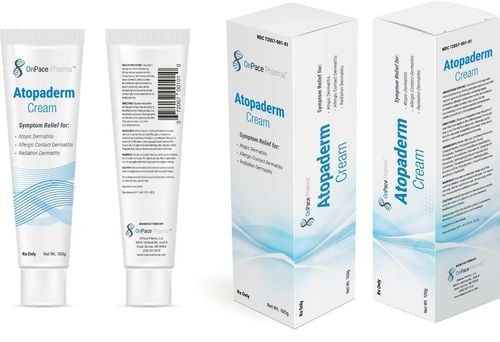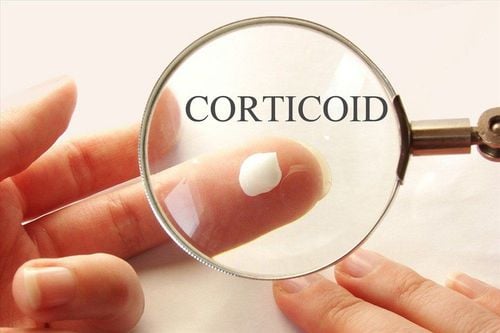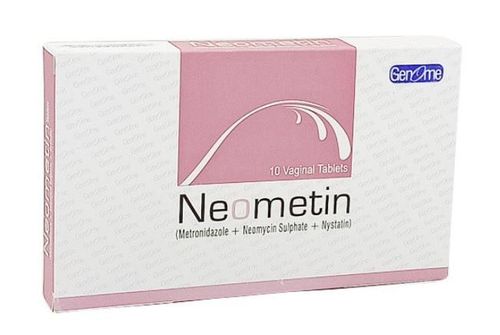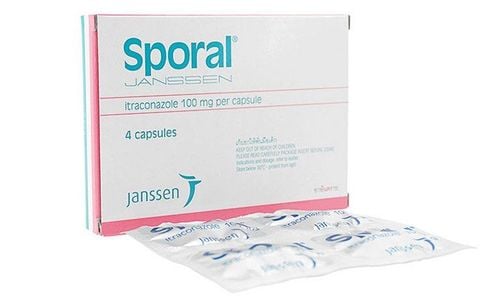This is an automatically translated article.
Antifungal antibiotics include systemic and topical antifungals. Antifungal drugs have many different forms, from topical drugs, to oral drugs, intravenous injections, ... What should be noted when using anti-fungal antibiotics?
1. Why is antifungal treatment necessary?
Bacteria and fungi often multiply, grow and cause disease in humid tropical environments. On the body, the most likely places for fungal infection are armpits, groin, between fingers, toes, back, neck, ... Fungal infections on the skin can cause skin irritation, itching, very red rashes. uncomfortable. Fungal infections, if left untreated, can lead to dermatitis and eczema.
Fungal bacteria are very contagious in the air and make the disease often recur if the patient is not detected and treated with antifungal medicine early. In addition, it is also necessary to actively prevent fungal infections when living with sick people or in a favorable environment for fungi.
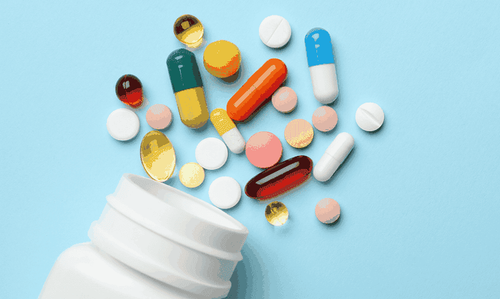
Thuốc kháng sinh chống nấm được chỉ định trong một số trường hợp
2. Anti-fungal antibiotics
Human pathogenic fungi are classified into 2 types depending on whether the site of fungal infection is systemic or dermatophytosis. Therefore, antifungals are also divided into systemic antifungals and topical antifungals (also called topical antifungals). However, systemic antifungals can work against fungi on the skin and vice versa.
2.1 Systemic antifungals Systemic antifungals are used when fungal bacteria have spread to many other organs in the body. Some common systemic antifungal antibiotics can be mentioned as:
Amphotericin B: Is a broad-spectrum antibiotic, against many fungi such as Aspergillus, Candida, Cryptococcus, Histoplasma, .... Main drugs It is used intravenously in the treatment of Candida, which causes sepsis of blood and internal organs, and Cryptococcus that attacks the brain and meninges. Amphotericin B can cause side effects such as fever, headache, nausea, vomiting, tremor, hypotension, uremia, renal tubular damage. Flucytosin: It is an oral drug and is easily absorbed from the gastrointestinal tract. Flucytosin is a narrow-spectrum antifungal, so it is often used in combination with other antifungal drugs to avoid resistance. Flucytosin is often combined with Amphotericin B in the treatment of Candida. The drug can cause some unwanted side effects such as gastrointestinal disturbances, diarrhea, vomiting, liver dysfunction, thrombocytopenia, anemia due to bone marrow suppression. Ketoconazole: Is an oral drug and is easily absorbed from the gastrointestinal tract, especially after meals. Ketoconazole is an antifungal medication commonly used to treat vaginal candidiasis, esophageal candidiasis, and nail fungus. Women who are pregnant or breastfeeding should not take this medicine. Ketoconazole causes side effects are menstrual disorders in women, breast enlargement in men, sexual dysfunction in both men and women, ... Ketoconazole is also used to treat tinea versicolor. Nystatin: Nystatin is prepared in many different forms such as topical medications, ointments, washes, vaginal and anal tablets, mouthwash, tablets or sugar coated tablets for oral administration, ... However, Nystatin Mainly used in oral form. This antifungal antibiotic is commonly used in the treatment of Candida in the esophagus, lungs, intestines, vagina, and in combination with other broad-spectrum antibiotics. 2.2 Ringworm Antifungal Drugs are used to treat fungal infections of the skin such as the scalp, skin on hands, feet, ...
Griseofulvin: Is an oral drug and the extent of drug absorption depends on drugs and digested food. Griseofulvin antifungal medicine is used to treat fungal diseases of the skin, between the fingers, toes, nails, and hair. Duration of drug treatment is at least 1 month for hair fungus and can be up to 6-9 months for nail fungus. Side effects of Griseofulvin are gastrointestinal disturbances, headache, fatigue, drowsiness, blurred vision, neuritis.
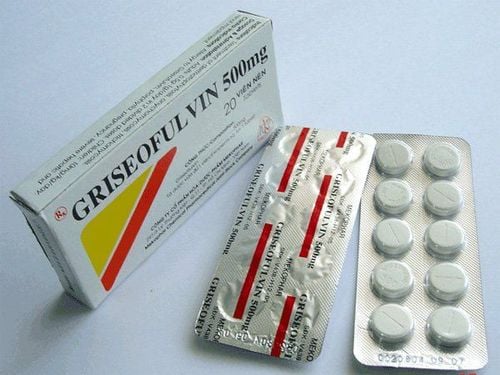
Griseofulvin là một trong các thuốc kháng sinh chống nấm
3. Some notes when using antifungal antibiotics
Some notes in the treatment and use of antifungal antibiotics:
Systemic antifungal drugs are only used when prescribed by a doctor. Use caution in using topical corticosteroids with antifungals because they can cause side effects such as stretch marks, skin cracks, skin atrophy, and create an environment for the fungus to continue to grow. In addition to medication, it is necessary to combine with measures to prevent fungus from spreading and re-infection such as:
Clean skin and always keep the skin clear, do not seal or wear tight and moist clothes, tight to the skin, especially after applying antifungal medication. If the weather is hot or sweaty, it is necessary to dry and clean the skin, wear clothes that absorb sweat well so as not to create conditions and habitat for fungi. Clean the house, bedroom to remove fungi, bacteria that live and cause diseases on the skin. Do not share personal household items such as towels, face towels, ... with people with skin fungus to avoid fungal infection. The use of antifungal antibiotics requires a doctor's prescription, especially systemic antifungals. In addition, it is also necessary to combine proper skin care and house hygiene so that the fungus does not grow and cause disease.
Follow Vinmec International General Hospital website to get more health, nutrition and beauty information to protect the health of yourself and your loved ones in your family.
Please dial HOTLINE for more information or register for an appointment HERE. Download MyVinmec app to make appointments faster and to manage your bookings easily.




